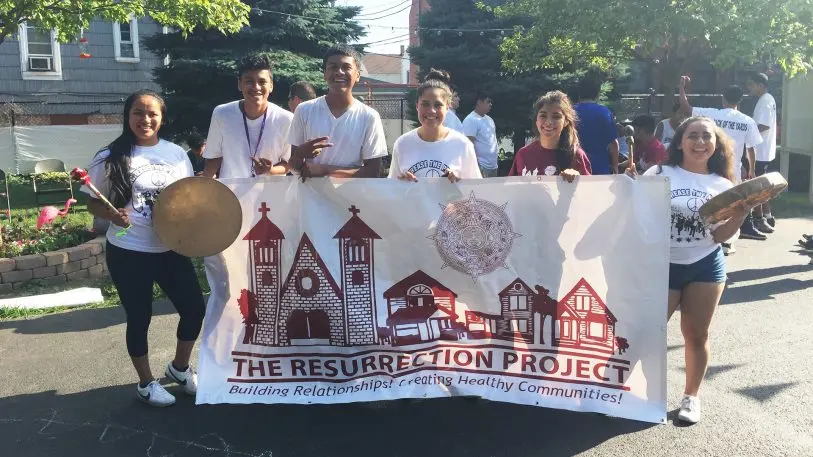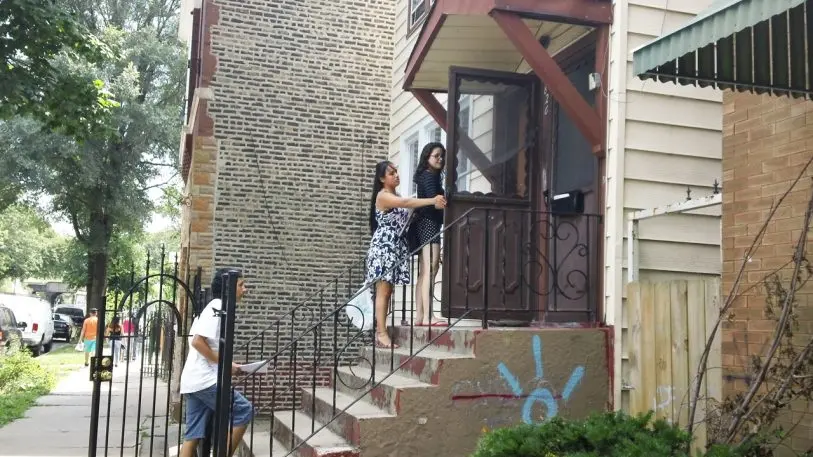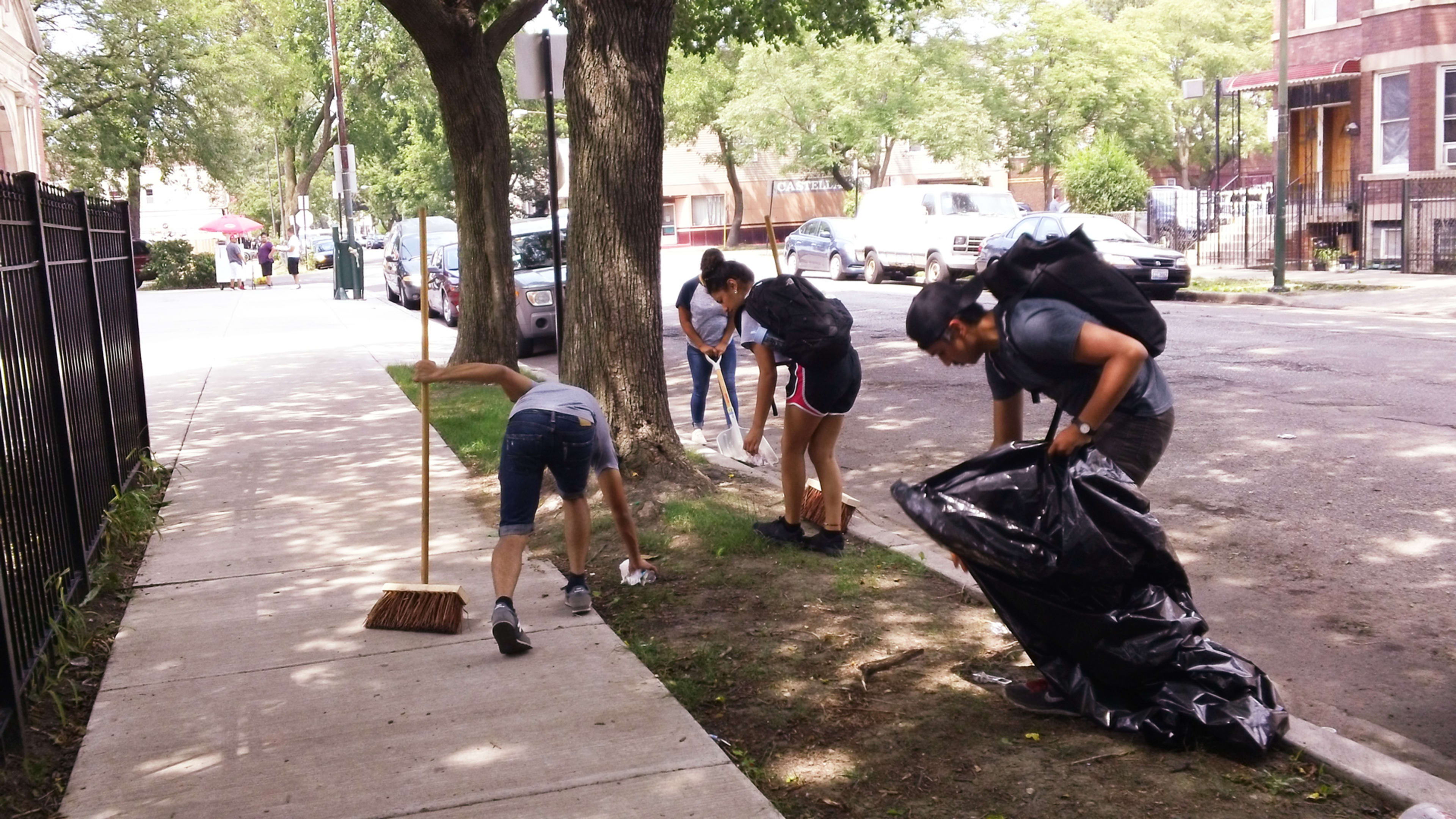A little after 7 p.m on Friday, July 7, a 20-year-old man was shot in Chicago’s Washington Park neighborhood–the first of 41 people shot in the city over the weekend. At 8 p.m., an 18-year-old was shot in Brighton Park, also on city’s South Side. Meanwhile, in the Back of the Yards neighborhood roughly halfway between both shootings, a group of 250 young people were gathering on the street. Their purpose: to spend the night protesting the city’s violence, at a location and time when violence was likely to occur.
The campout, organized by young leaders from the local community development organization The Resurrection Project, was the first of a series of actions planned for Friday nights on some of Chicago’s roughest blocks. The evening started with a peace march through the neighborhood, followed by speakers. As people lined up for food on a grill, they stopped by tables connecting them to community services like affordable housing. As it got dark, people started to play basketball, dance, and gather around a fire pit to talk.
“At around 12:30, we had about 50 people on a street corner in the South Side of Chicago to learn about Dr. Martin Luther King’s philosophy of nonviolence,” says Berto Aguayo, a 22-year-old community organizer for The Resurrection Project. “You have that going on around the fire pit, which is kind of an unusual sight, that late at night.”

“I think a lot of residents–and young people, especially–were fed up with all the violence happening in the community,” Aguayo says. “So when this shooting happened that took away a 16-year-old girl, I think all of us collectively said ‘Enough.’ One of the things we said was, ‘Why don’t we camp out on the corner where the shooting took place?’ It was one of those things where we convinced ourselves that it wasn’t that crazy of an idea to camp out on one of the hottest blocks in the city.”
“Hot blocks” or “hot corners”–places where gang violence is likely to occur both because of the overall presence of gangs and because violence has happened at those locations in the past–are common in Chicago’s South Side, and some neighborhoods, such as Back of the Yards, have seen a recent increase in violence with automatic weapons. The blame is often laid on young people, and the group wanted both to change the narrative and to empower youth.
“It’s young people beginning to feel that they can be part of something, something productive,” says Raul Raymundo, cofounder and CEO of The Resurrection Project. “Because the image of these inner city tough areas is despair and powerlessness.”

The campouts, which usually last from 5 p.m. to 5 a.m., are not isolated events; for a week leading up to each event, volunteers clean up the neighborhood and spend time on the street reporting problems like broken streetlights to the city, and knocking on doors registering voters and inviting neighbors to the peace march and campout. During the event, as people see the action and join in, the group uses it as a way to recruit new leaders for future events. Since the group first began organizing the events in October 2016, there have been seven campouts. Four additional campouts will happen this summer.
One young leader, a 16-year-old with a criminal record, is now volunteering to help the community and “advocating peace,” Aguayo says, after coming to work with the organization three months ago. Fifty young leaders are now involved with the campaign (the organization as a whole has 125 employees).
By playing soccer or breakdancing in the middle of the night, the group is reclaiming the street “when things are most likely to go down, and people are most vulnerable and scared,” he says.
The goal is to continue to grow. “With these campouts happening every week, we really hope to recruit more leaders, so they can help us with our peace efforts in the long term,” he says. “That’s what we hope to do: to make sure that we’re creating young leaders that will be helping us create a culture of nonviolence in our communities.”
Recognize your brand’s excellence by applying to this year’s Brands That Matter Awards before the early-rate deadline, May 3.
